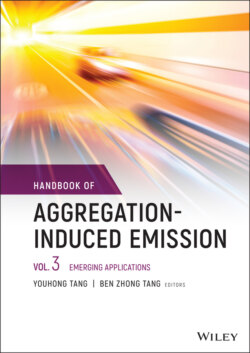Читать книгу Handbook of Aggregation-Induced Emission, Volume 3 - Группа авторов - Страница 51
4.2 Classification and Properties of AI‐ECL luminophores
ОглавлениеFrom our discovery in 2017 [28], a huge attention has been paid to the development of different AI‐ECL luminophores, considering the background knowledge in both ECL and AIE. Since the aggregation form can be obtained in aqueous systems, ECL properties have been mostly evaluated by following the coreactant mechanism. Up to today, the reported samples based on inorganic materials or polymeric aggregated forms belong to the oxidative‐reductive pathway, while few of the organic materials show reductive‐oxidative pathway. Following, AI‐ECL luminophores are classified by typology of material or molecule. Metal transition complexes include platinum and iridium complexes, polymers and polymeric nanoaggregates can be entirely organic or can include metal transition complex moieties. The polymer has the advantage of easy‐forming dots or nanoparticles by reprecipitation a microemulsion. The same fate is observed for organic molecules while different hybrid materials have been synthesized in other ways to obtain them with various sizes and shapes.
